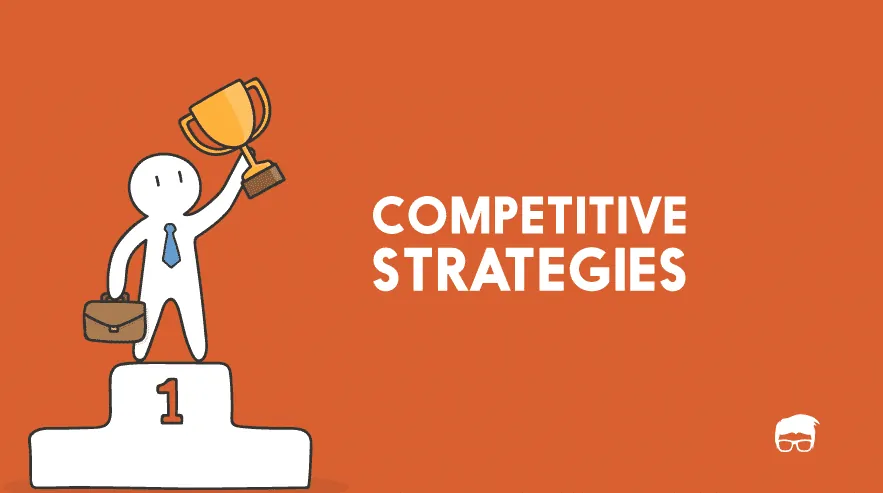A typical market is occupied by multiple firms competing for the position of the market leader. Marketers always want to occupy a well-known place in the minds of the consumers, and as you can guess – they compete for it. In today’s competitive world, it has become absolutely imperative to not only address competition through the use of competitive strategies but also to gain sustainable competitive advantage but nonetheless, one can be confused as to what strategies to use against competitor strategies effectively.
Here lies the answer:
Competitive Strategies Tailored To The Market Position
A competitive strategy is a long-term action plan devised to make the company gain a competitive advantage over all its competitors.
Since the markets are overflooded with alternatives, it is important for a brand to devise its own competitive strategy. Here’s a detailed guide explaining the competitive strategies of the challenger, follower, and nicher according to their market positions.
Market Challenger Strategies
Frontal attack
In a pure frontal attack strategy, the attacker matches the opponent’s product, advertising, price and distribution. In a modified frontal attack, the competitor can reduce the prices if the leader doesn’t respond in the same way and if the competitor can convince the market that the product is equal to that of the leader’s.
Example – Amul used this strategy when it launched Amul Kool and Amul Masti Dahi at a low price but the same level of the quality as that of other competitors in the Indian market.
Flank Attack
A flanking strategy identifies shifts in the market that create gaps and develops strategies to fill those gaps. It means attacking the competitor on its weak points. Here, the market challenger determines the competitor’s weak areas in terms of two strategic dimensions, i.e., Geographic and segmental, and then pushes its product in that area.
Example—L.G. has successfully used this strategy by introducing the colour television “Sampoorna” for the rural people in India, outshining the other coloured TV players who focused less on these areas.
Encirclement Attack
Encirclement attempts to attack the leader or competitor from all fronts simultaneously. Here, the market challenger launches several offensive campaigns i.e. surrounds the competitor with a varied brand and forcing the competitor to defend himself from all the sides simultaneously.
This strategy makes sense when the challenger commands superior resources. The FMCG industry is a classic example of this where HUL and ITC use this extensively.
Bypass Attack
Bypassing means avoiding the enemy altogether to attack easier markets. This involves three approaches: diversifying into unrelated products, new geographical markets or developing new technologies to gain an advantage over competitors.
Example – Pepsi used this when it launched Aquafina nationally in 1997 and purchased Tropicana and Quaker Oats Company, where it diversified into unrelated areas.
Guerrilla Attack
Guerrilla attacks consist of small, conventional or unconventional sporadic attacks, which may include selective price cuts, intense promotion or occasional legal action to harass the opponent and attempt to secure footholds. This attack can prove to be expensive but must be backed by a strong complementary attack to beat the opponent.
Example—When Coca-Cola was the official partner of the World Cup, Pepsi counterattacked it by using the punch line “Nothing official about it.” This led to legal action by Coca-Cola.
Market Follower Strategies
Cloner
The cloner copies the leader’s products, name and packaging with slight variations. Technology companies are often accused of being cloners.
For example, Ralston Foods, owned by ConAgra, sells imitations of name-brand cereals in look-alike boxes as part of its “Value + Brands” platform.
Imitator
The imitator copies some of the leader’s ideas but differentiates on some fronts, such as packaging, advertising, location, and pricing. Here, generally, the leader does not mind the imitator as long as the imitator is not launching an aggressive attack.
Example – Telepizza chain by Fernandez Pujals looks like Domino’s idea to Spain and is now the market leader.
Adapter
The adapter improves the leader’s product, but the basic value proposition remains similar. The adapter starts by tapping different markets but has often been seen developing into a strong challenger.
For example, tech companies like Dell and Sony adapt and launch new products, making improvements to competitors’ products continuously.
Counterfeiter
A duplicate of the leader’s product is made and sold in the black market through disreputable dealers. This can be contrasted with the other strategies as this is the only illegal follower strategy where the culprit can be penalized.
Apple and other luxury brands have been plagued with this problem for a long time, especially in Asia.
Market Nicher Strategies
Single Niching
Single Niching is where the company is targeting a particular niche market and is sticking to that niche market by offering a high-quality product. A premium can generally be charged in exchange, but a disadvantage is that the niche may dry up or get attacked. The company is then stuck with highly specialized resources with limited alternative uses.
Multiple Niching
In multiple niching, the company focuses on two or more niche markets. This increases the company’s chances of survival because the risk is diversified, and the specialized resources may have alternative uses.
Example—BMW can be seen as a company making carefully crafted automobiles for high-end customers. This is called serving a single niche market. BMW also started making high-quality and high-end bikes, which can be seen as a strategy to diversify risk by following multiple niching strategies.
Bottom Line?
So, as we can see companies are increasingly adopting strategies to address competition according to their market position. There are examples of numerous companies that have lost their presence in the market because they are unable to face competition and change according to the times. This further increases the need for companies to know how and when to react appropriately. What we can safely say is that the relevance of these strategies is increasing day by day.
A marketing professional, enthusiastic about connecting with new people and exchanging ideas. An avid traveler open to exploring new cultures and experiences









